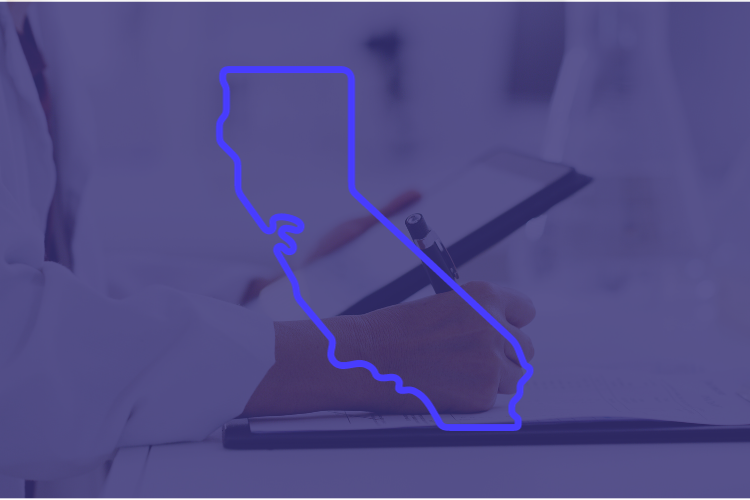California has the most rules of any state, so it’s no surprise that there is additional complexity when it comes to managing healthcare compliance in California. The Golden State also has a reputation for being at the forefront of healthcare policy innovation, which means that providers must constantly adapt to new laws and regulations.
To effectively manage compliance, healthcare organizations must establish a robust system for monitoring and interpreting these changes and swiftly implement necessary adjustments. This article provides an overview of key factors you’ll want to know about healthcare compliance in California.
California Healthcare Compliance Resources
Let’s start with the important state government agencies you’ll need to work with:
- The California Department of Public Health (CDPH) oversees a wide range of programs and services, from disease prevention and control to emergency preparedness and response.
- The California Hospital Association (CHA) provides leadership and advocacy for hospitals and health systems, promoting access to quality healthcare for all Californians.
- The California Department of Health Care Services (DHCS) manages Medi-Cal, the state’s Medicaid program, providing essential healthcare services to low-income individuals and families.
- The Medical Board of California and the California Board of Behavioral Sciences ensure that medical and mental/behavioral health providers meet the state’s licensing requirements, promoting patient safety and quality care.
Regulations Unique to California
To meet the standards of healthcare compliance in California, there are a few additional regulations. For example, because fires are a concern in many areas of the state, there are additional precautions that organizations must meet.
Safety and Cal/OSHA
The Division of Occupational Safety and Health (DOSH), better known as CAL/OSHA, is responsible for enforcing California laws and regulations pertaining to workplace safety and health and for providing assistance to employers and workers about workplace safety and health issues. Many of these laws and regulations are above and beyond what is required by the federal government. For example, CAL/OSHA adopted non-emergency COVID-19 prevention regulations that must be followed. Other healthcare-specific compliance regulations to double check are those around bloodborne pathogens, preventing needle sticks, and medical waste management.
Privacy and CCPA
California is known for its stringent patient privacy laws, notably the California Consumer Privacy Act (CCPA). Healthcare organizations in California must adhere to both the Health Information Portability and Accountability Act (HIPAA) as well as the CCPA. Notably, personal information (as that term is defined under the CCPA) created, received, maintained, or transmitted by entities subject to HIPAA is also subject to the CCPA under several circumstances. California healthcare organizations will need to implement stringent data security measures, train staff on privacy practices, and stay vigilant for any potential breaches. Failure to comply with these regulations can result in substantial fines and legal repercussions, making it imperative for healthcare organizations to prioritize data security and privacy.
Tips on Managing Healthcare Compliance in California
Effectively managing healthcare compliance in California is a critical responsibility for healthcare organizations, as it ensures the delivery of high-quality care while adhering to legal and regulatory requirements. Here are some key strategies to help healthcare organizations manage compliance effectively:
- Conduct State-Specific Training: Provide ongoing training and education to staff that is customized to your state’s regulations as well as your facility. If using a learning management system, ensure the vendor offers California-approved training.
- Organize Policies By Requirement: Including “CA” in every document that is required by the state will make it much easier for you to find these documents in an online system when a surveyor is onsite. It is also best practice to include the standard you are meeting for additional clarity.
- Establish a System for Monitoring Risk: Being able to identify compliance risks before they become incidents or violations can save the entire organization time and money. Identifying trends and consistently reviewing reports can signal issues, such as training not being completed or a large number of incidents in one location.
- Use Compliance Management Software: Accreditation surveyors say organizations that use compliance software are more prepared for onsite visits and surveys. The software helps to keep documents and policies organized, ensures training content is up to date, and makes reporting easy.
By implementing these strategies and fostering a culture of compliance within your healthcare organization, you can effectively manage healthcare compliance, reduce risks, and provide the best possible care to your patients while staying within legal boundaries.
Credentialing Compliance in California
California’s high volume of providers means that payers are backlogged with enrollment applications and processing could take as long as four to five months. With this timeline, it is even more critical to make sure your credentialing packet is complete so you don’t have additional delays.
Meet California Compliance Requirements With MedTrainer
While the path may be complex, healthcare providers who prioritize compliance will not only avoid legal troubles but also enhance the quality of care they provide to their patients in the beautiful state of California.
MedTrainer’s all-in-one compliance platform can streamline management of California healthcare compliance. MedTrainer seamlessly consolidates your organization’s policies, incident reports, safety plans, HR documents, contracts, and more. This centralized repository ensures all employees have easy access to essential information. The course library is curated to align with regulatory and accreditation requirements, and courses are regularly added and updated to ensure the most current information.

